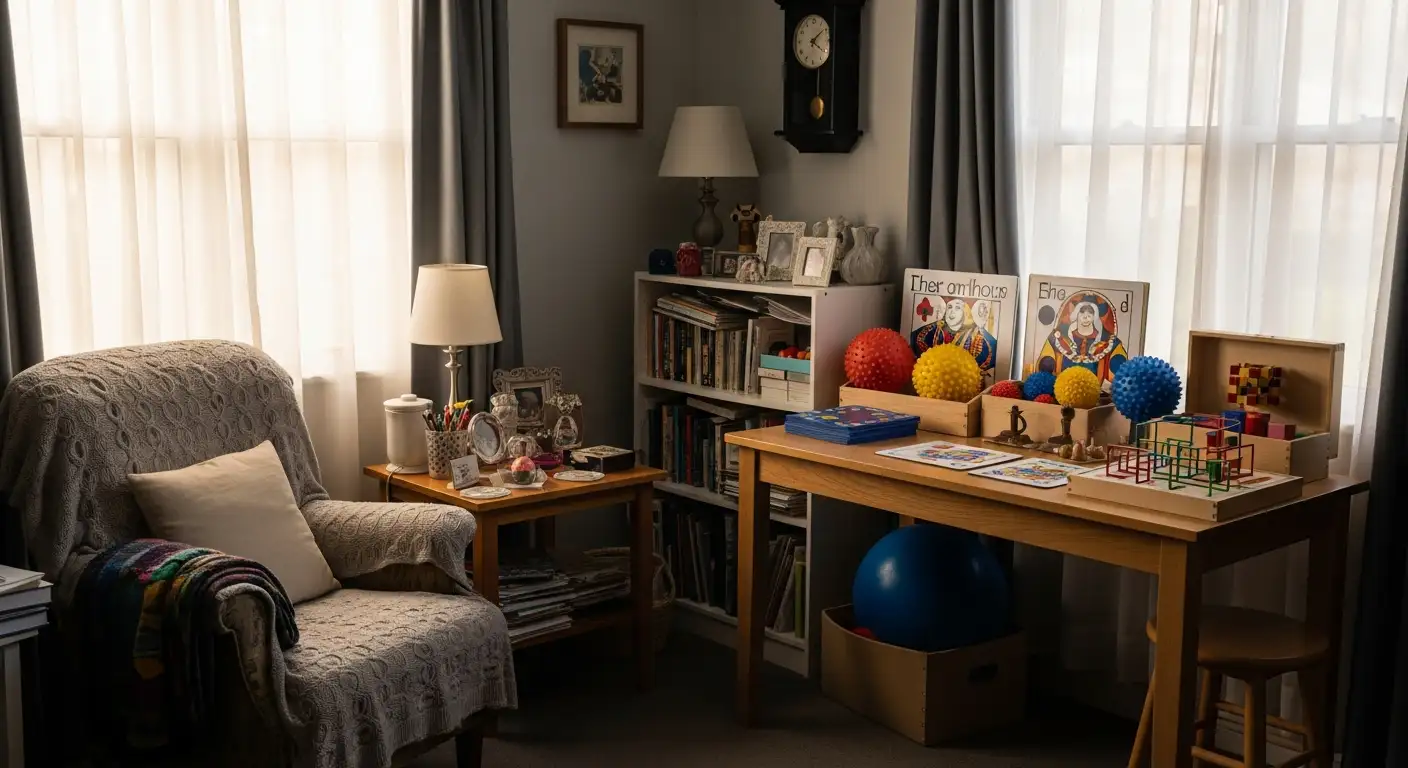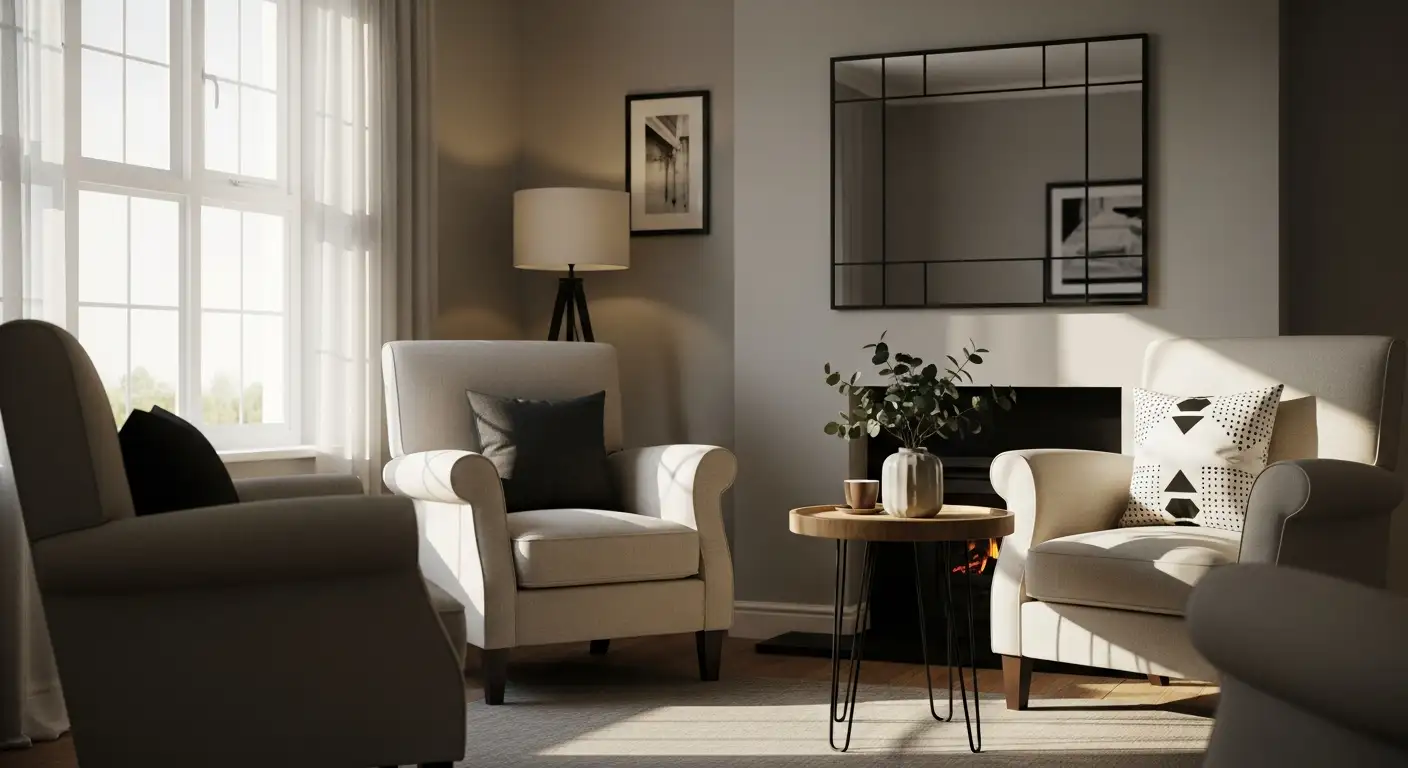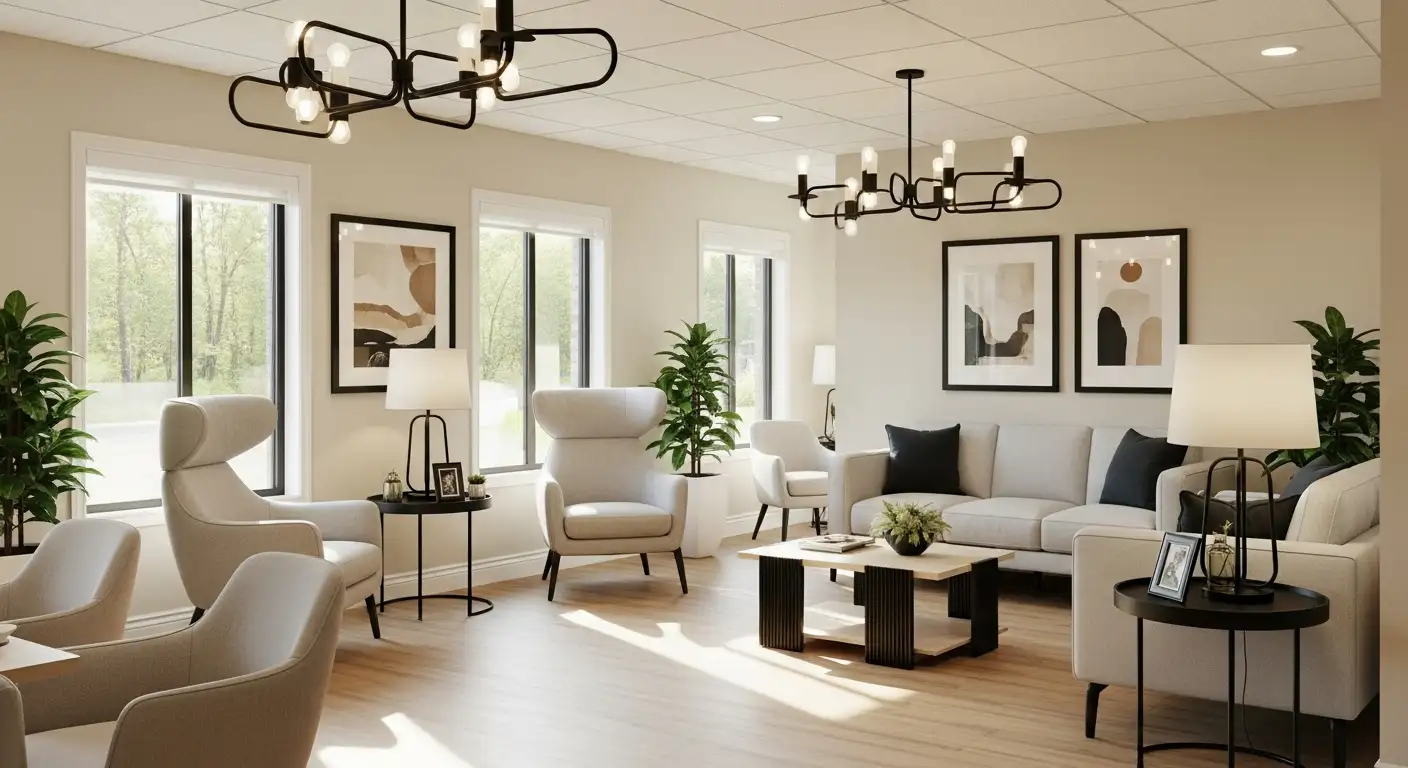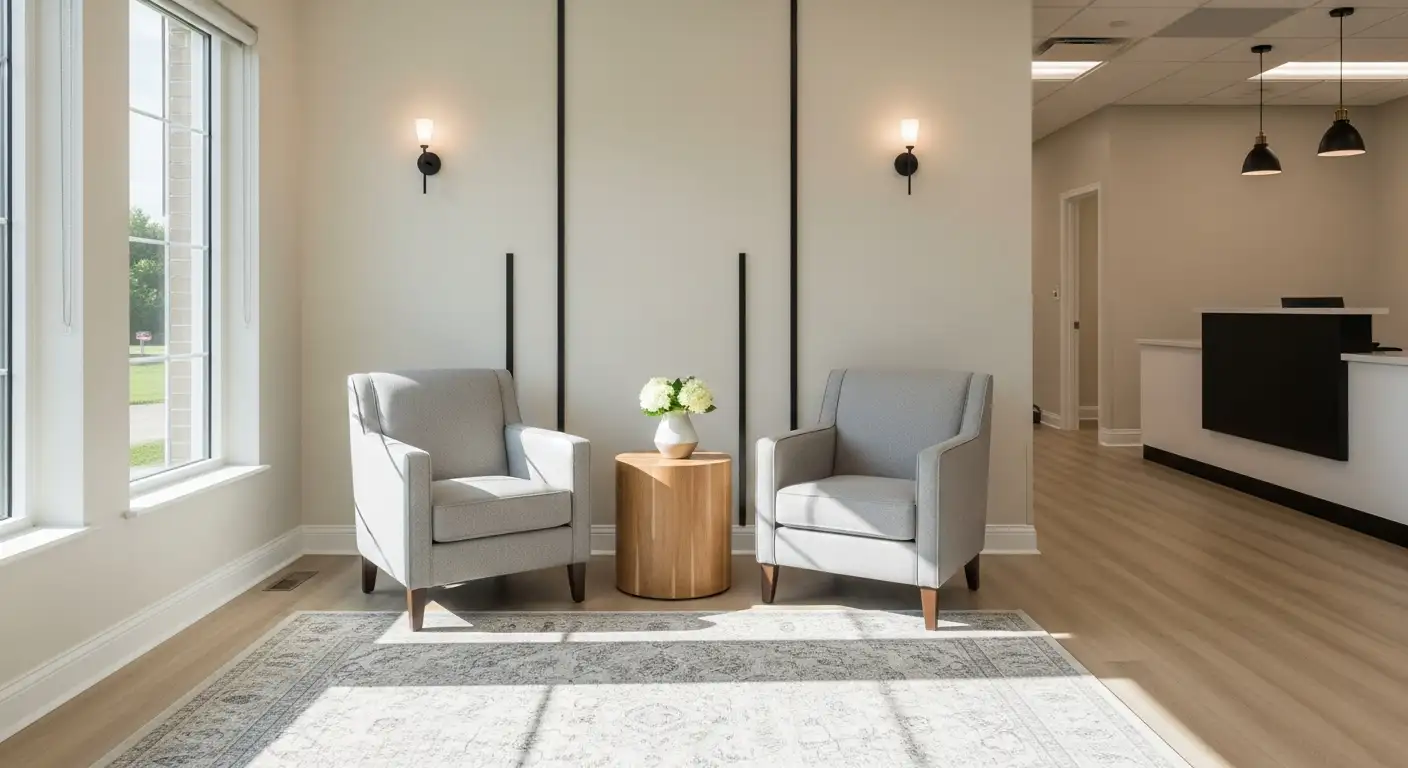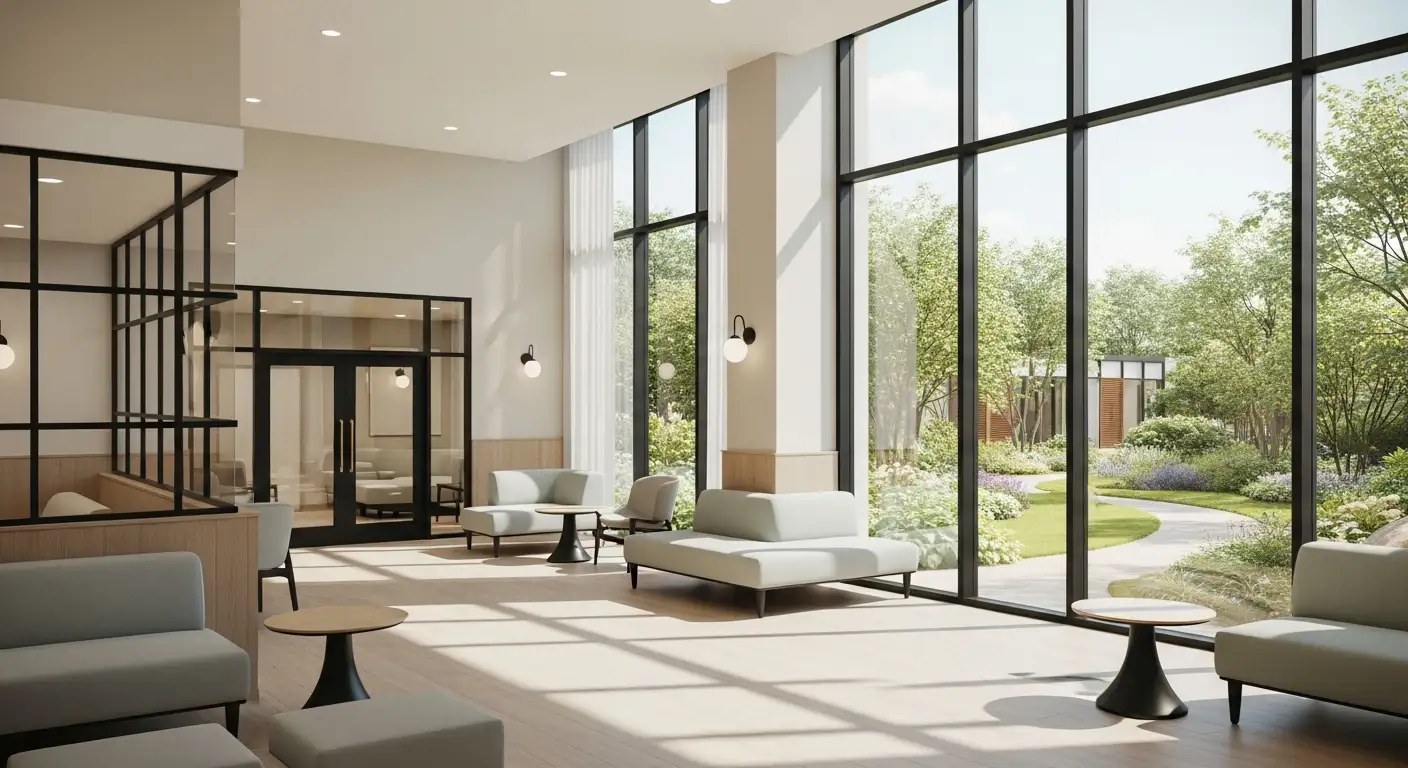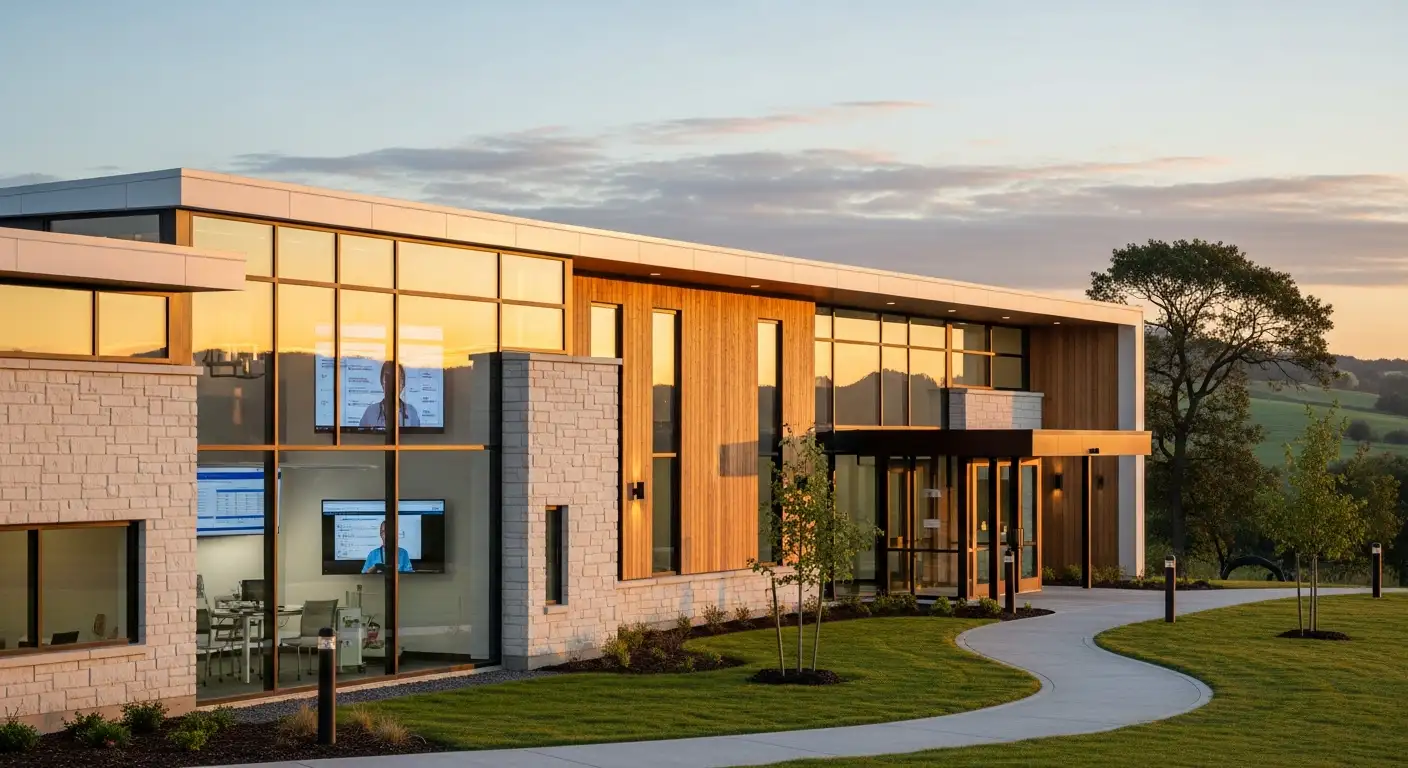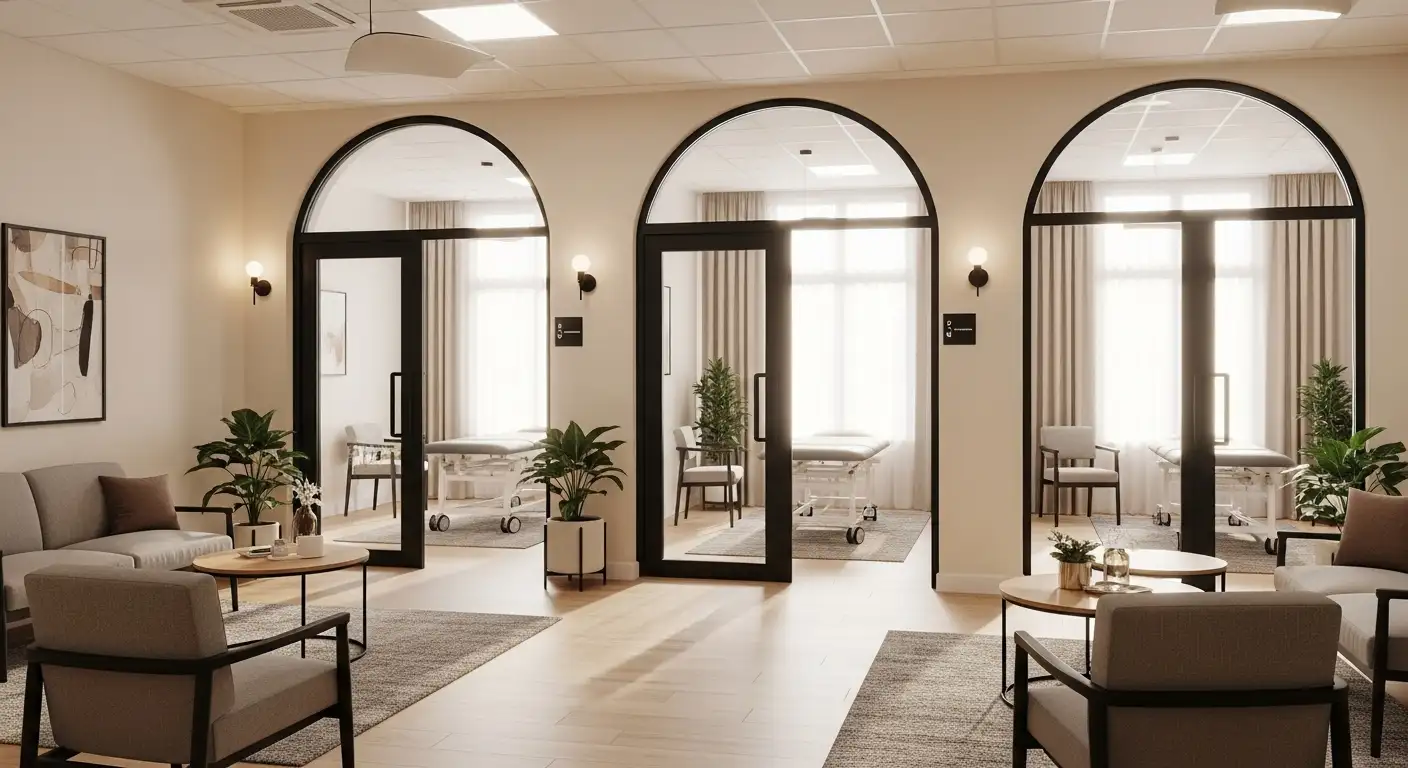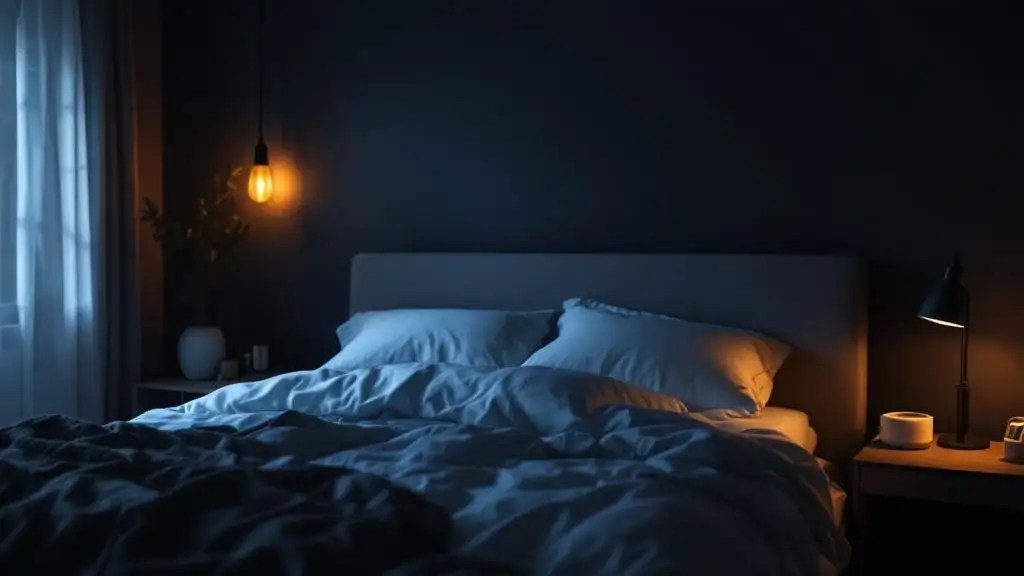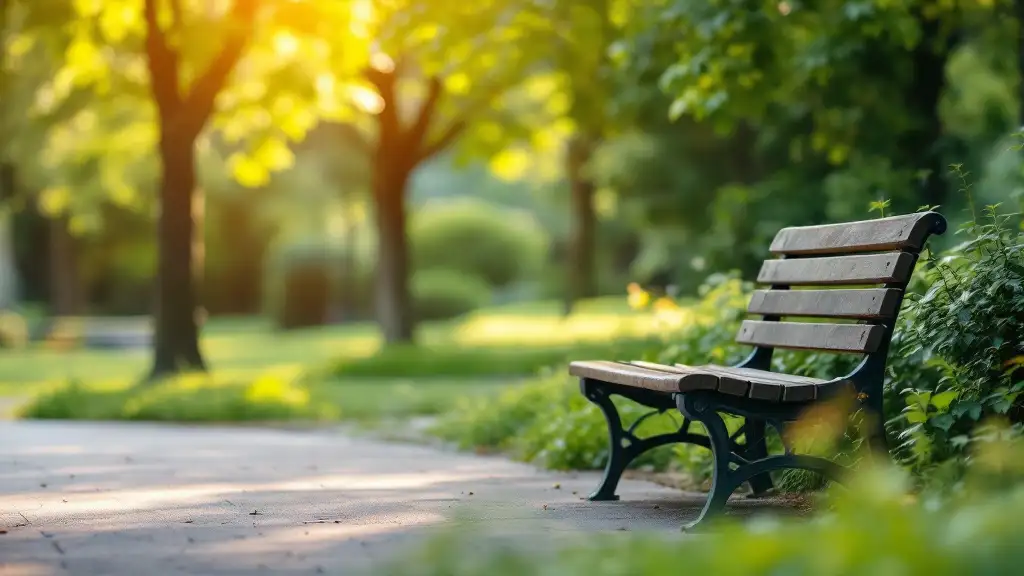Shedding Light on SAD in Seniors
Seasonal Affective Disorder (SAD) is a common yet often underrecognized form of depression that occurs at specific times of the year, most notably during the darker, winter months. While SAD affects individuals across all age groups, seniors are especially vulnerable. This vulnerability is compounded by reduced outdoor activity, less natural sunlight, and age-related health challenges. Recognizing the unique ways SAD manifests in older adults and implementing effective management strategies can significantly improve their quality of life and mental well-being.
Symptoms and Signs of SAD in Seniors
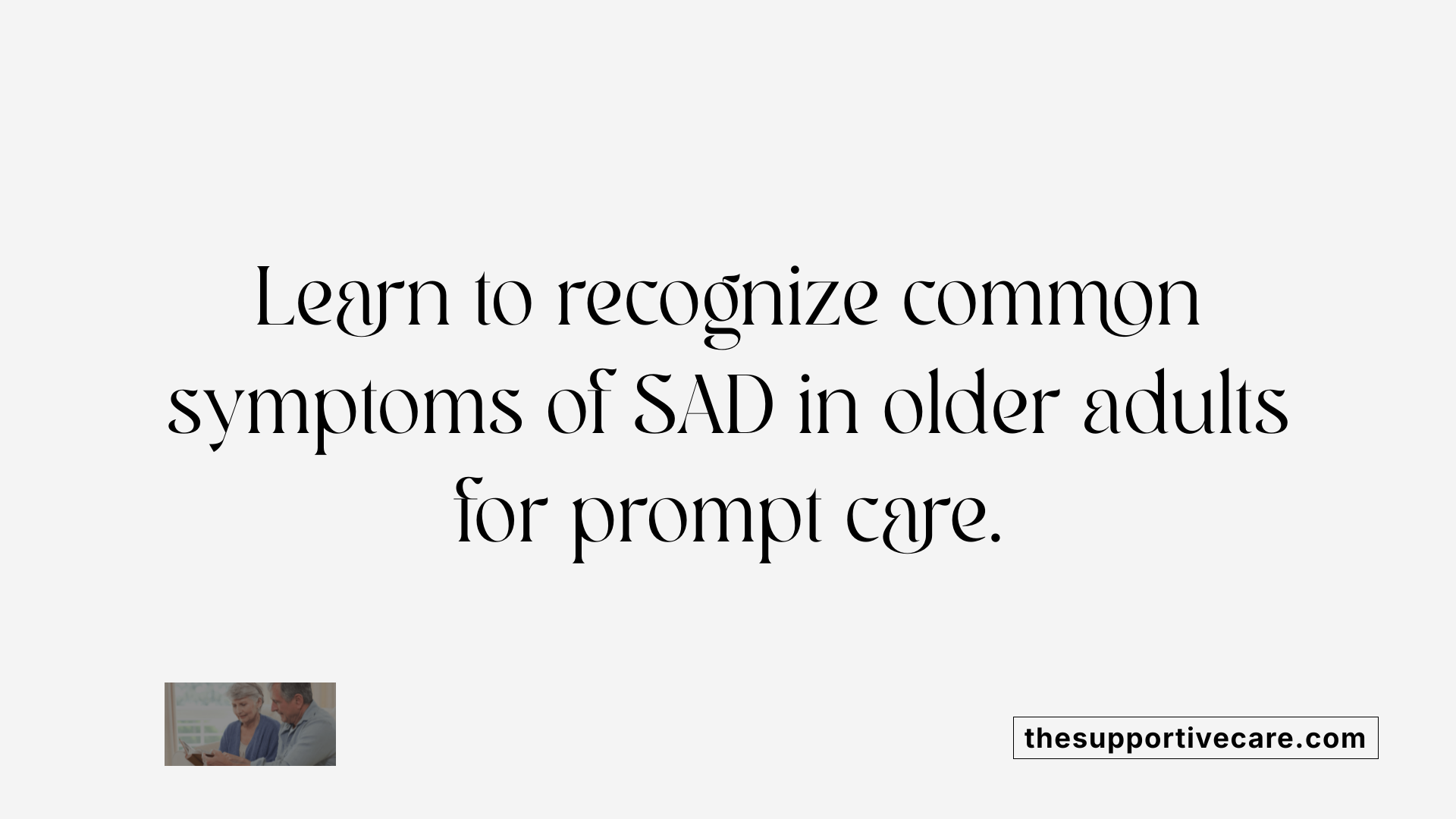
What are the symptoms and signs of Seasonal Affective Disorder (SAD) in seniors?
In seniors, Seasonal Affective Disorder (SAD) often presents with symptoms similar to depression, but some may be more specific to their age and health status. Key signs include persistent feelings of sadness and hopelessness, which can significantly affect daily life.
Many older adults experience social withdrawal, avoiding friends, family, or previously enjoyed activities, which can deepen feelings of loneliness.
Physical signs such as fatigue, low energy, and sleep disturbances—either insomnia or excessive sleeping—are common. Changes in appetite, especially increased cravings for carbohydrates leading to weight gain, are also typical.
Cognitive difficulties, including trouble concentrating, forgetfulness, or slowed thinking, may occur. Seniors might also report physical pains, aches, or bodily discomforts with no clear medical cause.
Additionally, some may engage in risky behaviors, such as increased alcohol use or neglect of health routines. Recognizing these symptoms early allows for effective intervention and differentiation from other issues like dementia or chronic illnesses.
Addressing SAD in seniors involves a comprehensive approach combining professional treatment, lifestyle adjustments, and social support to improve quality of life.
Causes and Risk Factors of SAD in Older Adults

What causes and risk factors are associated with SAD in older adults?
Seasonal Affective Disorder (SAD) in seniors mainly stems from environmental and biological influences. The most significant environmental factor is reduced sunlight during the winter months. Less sunlight impacts the body's internal clock, known as the circadian rhythm, leading to hormonal imbalances involving serotonin and melatonin.
Serotonin, a chemical that affects mood and happiness, tends to decrease with less sunlight, making seniors more prone to feelings of depression and lethargy. Simultaneously, melatonin, which regulates sleep cycles, may become overproduced, resulting in oversleeping and fatigue.
Biological factors also play a crucial role. Many older adults experience vitamin D deficiency because the vitamin absorption decreases with age, and they often spend less time outdoors. This deficiency has been linked to mood disturbances and depression as well.
Lifestyle and environmental conditions further elevate risk. Seniors living in northern latitudes or regions with long, harsh winters are exposed to fewer daylight hours, increasing their vulnerability. In addition, physical limitations, chronic illnesses, or mobility issues can reduce outdoor activity, worsening light deficiency.
Psychological and social factors are also relevant. A personal or family history of depression or anxiety, along with social isolation and loneliness, can intensify the risk. High stress levels, recent major life changes, or sleep disturbances can trigger or exacerbate symptoms.
Overall, in older adults, the interaction between decreased sunlight, hormonal shifts, physical health, and social factors creates a high risk for developing SAD. Recognizing these factors helps in early intervention and effective management to improve quality of life.
| Cause or Risk Factor | Explanation | Additional Detail |
|---|---|---|
| Reduced sunlight exposure | Less outdoor light affects hormonal regulation and circadian rhythms | More common in northern latitudes |
| Disrupted biological processes | Changes in serotonin, melatonin, and vitamin D levels influence mood | Vitamin D deficiency common in seniors |
| Living in northern or shadowed environments | Longer winter days and less sunlight exposure | Higher prevalence in these regions |
| Personal or family history of mood disorders | Increased vulnerability due to genetic or past mental health challenges | Often coexists with depression |
| Chronic health conditions and social isolation | Reduced mobility, loneliness, and health issues limit outdoor activities and sunlight exposure | Common in seniors with mobility issues |
Understanding these causes and risks allows caregivers and healthcare providers to develop preventative strategies and personalized treatments for older adults at risk of SAD.
Diagnosis of SAD in Seniors
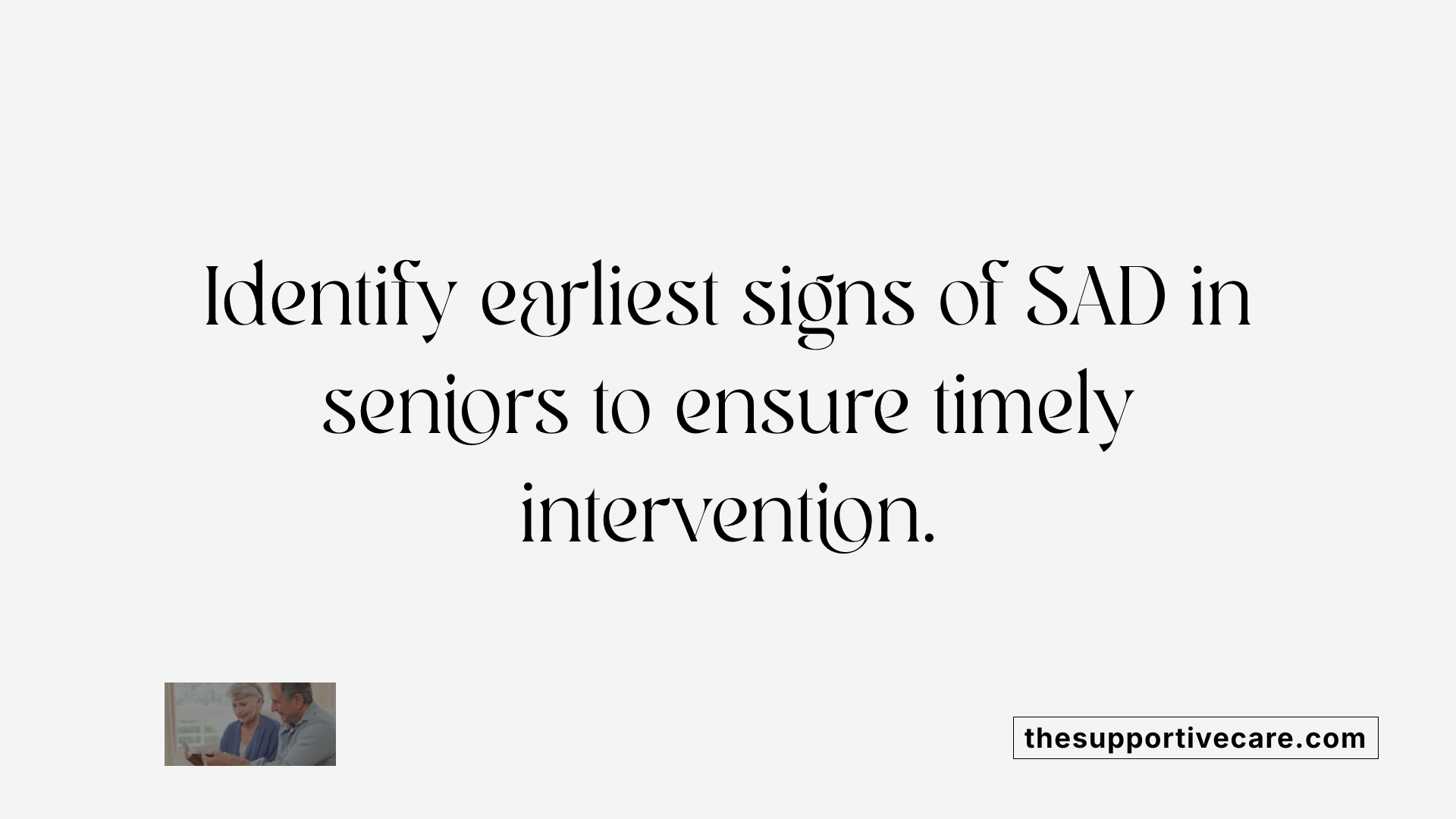 How is SAD diagnosed in seniors?
How is SAD diagnosed in seniors?
Diagnosing Seasonal Affective Disorder (SAD) in older adults requires a thorough and careful approach. Healthcare providers begin with a detailed clinical assessment, evaluating the patient’s mood, sleep patterns, energy levels, and other symptoms that appear seasonally. This includes asking about changes in appetite, weight, social activity, and interest in hobbies, which commonly fluctuate in SAD.
Standardized screening tools like the Geriatric Depression Scale (GDS) can help identify depressive symptoms specific to seniors. These tools are essential because symptoms may present differently in older adults, sometimes mimicking other health conditions.
Differentiating SAD from other mental and physical illnesses is crucial. Conditions such as dementia, physical illnesses like hypothyroidism, or medication side effects can cause similar symptoms. Therefore, clinicians perform cognitive assessments and review medical histories to exclude these possibilities.
Laboratory tests play a supportive role in diagnosis. Blood work might include thyroid function tests, vitamin B12 levels, and assessments for other conditions that could contribute to mood changes.
A detailed examination also involves analyzing the pattern of symptoms over seasons. For a diagnosis of SAD, symptoms should emerge during specific seasons—most often late fall or winter—and improve when daylight increases in spring.
To confirm the seasonal pattern, clinicians might observe symptoms over multiple years and evaluate the effectiveness of light therapy. A positive response to light therapy, especially if symptoms lessen with regular exposure to bright light, can strengthen the diagnosis.
Overall, diagnosing SAD in seniors combines symptom assessment, ruling out other possible causes, and understanding the seasonal pattern of symptoms to tailor effective treatment strategies for this vulnerable population.
Treatment Modalities for SAD in the Elderly
Treating seasonal affective disorder (SAD) in seniors involves a combination of approaches aimed at alleviating symptoms and improving quality of life.
One of the most common treatments is light therapy. This method uses a special bright light box, typically emitting 10,000 lux, to simulate natural sunlight. Seniors are advised to sit near the box for about 30 minutes every morning during the darker months. This exposure can help reset their biological clock, regulate melatonin and serotonin levels, and lift their mood.
Psychotherapy, especially cognitive-behavioral therapy tailored for SAD (CBT-SAD), is also effective. This form of talk therapy helps seniors identify and challenge negative thought patterns related to seasonal changes. It promotes behavioral strategies like maintaining routines, increasing outdoor activities, and fostering social connections.
Antidepressant medications, particularly selective serotonin reuptake inhibitors (SSRIs), are frequently prescribed for seniors experiencing significant symptoms. These medications help balance brain chemicals that influence mood and can reduce the severity and recurrence of SAD episodes. It is important for healthcare providers to monitor medication side effects and interactions, especially in older adults.
Addressing vitamin D deficiency is another supportive measure. Older adults often have lower vitamin D levels due to reduced skin synthesis and dietary intake. Supplementing with vitamin D, along with dietary improvements—such as consuming fatty fish, fortified foods, and eggs—may help improve mood, though research on the effectiveness varies.
Lifestyle adjustments also play a vital role. Regular physical activity, such as walking, swimming, or yoga, can improve energy and mood. Maintaining social interactions through family, friends, or community groups helps combat feelings of isolation. Spending time outdoors when weather permits maximizes natural light exposure. Additionally, techniques like mindfulness, deep breathing, and relaxation exercises can reduce stress and support mental well-being.
Overall, a comprehensive, individualized plan developed in consultation with healthcare professionals can effectively manage SAD symptoms in seniors. Early intervention and consistent adherence to treatment maximize chances of relief and better mental health.
Management Strategies and Lifestyle Adjustments
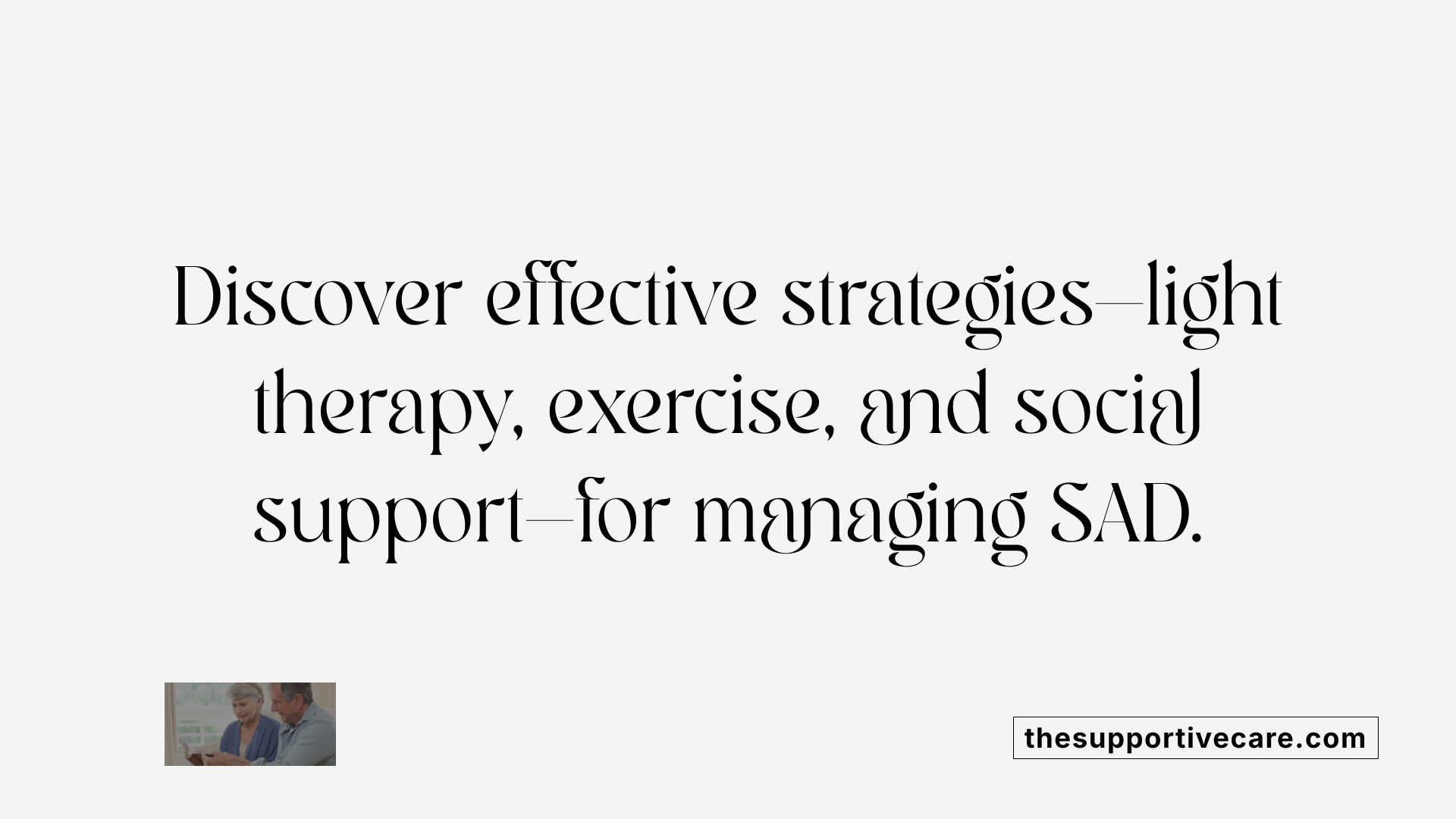
How can light therapy be used to help seniors with SAD?
Light therapy is one of the most common treatments for Seasonal Affective Disorder in seniors. It involves sitting near a special light box that emits bright light, typically at an intensity of 10,000 lux, for about 20 to 30 minutes each morning. This exposure helps regulate the body's internal clock or circadian rhythm, which becomes disrupted during the darker winter months. Regular use of light therapy can significantly reduce symptoms such as low energy, depression, and oversleeping. Many seniors notice improvements within just a few days to weeks when they consistently practice this therapy.
What activities can boost mood and energy levels?
Engaging in physical activity, such as walking, swimming, yoga, or tai chi, can boost mood and increase overall energy. Exercise stimulates the production of endorphins, natural mood enhancers, which help combat feelings of sadness and lethargy common in SAD. Additionally, maintaining social connections—whether through community activities, virtual meetings, or calling loved ones—helps reduce feelings of loneliness and fosters emotional support.
How important are routines and sleep habits?
Establishing a consistent daily routine improves stability and helps manage SAD symptoms. Going to bed and waking up at the same time each day supports healthy circadian rhythms. Good sleep hygiene, like avoiding caffeine and screen time before bed, creates better sleep quality and reduces irritability and fatigue. Routines can include regular meal times, scheduled outdoor exposure, and time set aside for hobbies, which help create a sense of normalcy and control.
Which psychological approaches work best?
Psychotherapy, especially cognitive-behavioral therapy (CBT), is effective for seniors experiencing SAD. This therapy helps challenge negative thoughts about winter and seasonal changes, replacing them with positive coping strategies. Interpersonal therapy (IPT), focusing on improving social skills and relationships, also supports emotional resilience. These behavioral techniques empower seniors to manage their mood and maintain a hopeful outlook during challenging months.
How can addressing vitamin D deficiency help?
Vitamin D deficiency, common in older adults due to less outdoor activity and reduced skin synthesis, is linked to depression. Supplementing with vitamin D, especially during the winter months, can help improve mood. A healthcare provider may recommend blood tests to check vitamin D levels and advise appropriate supplementation. Coupled with a nutritious diet rich in vitamin D–containing foods like fish, fortified dairy, and cereals, this approach can contribute to better mental health.
| Strategy | Description | Additional Notes |
|---|---|---|
| Light therapy | Sit by a bright light box for 20-30 minutes daily | Effective in regulating circadian rhythms |
| Physical activity | Regular movement like walking or yoga | Elevates mood hormones and energy levels |
| Social engagement | Maintain contact with family and community | Reduces loneliness and emotional isolation |
| Routine and sleep hygiene | Consistent schedule with proper sleep habits | Supports body’s natural rhythms |
| Psychotherapy | Use CBT or IPT to address negative thoughts and behaviors | Builds resilience and coping skills |
| Vitamin D management | Supplement or diet to prevent deficiency | Supports mood regulation |
By combining these strategies, seniors can better manage SAD symptoms, improve their overall well-being, and enjoy healthier, more stable mental health during the winter months. Consistent application and professional guidance are essential in achieving the best outcomes.
Prevention and the Role of Lifestyle Modifications

Are there preventative measures or lifestyle adjustments that seniors can adopt to reduce SAD symptoms?
Seniors can take proactive steps to lower the risk or severity of Seasonal Affective Disorder (SAD). One effective approach is maximizing exposure to natural light. Spending time outdoors in the morning not only provides sunlight but also helps regulate the body's internal clock, which can become disrupted during darker months.
Creating well-lit living spaces is equally important. Using bright indoor lighting, especially during mornings and early afternoons, can simulate sunlight and improve mood.
Maintaining a healthy daily routine supports overall well-being. Regular physical activity, such as walking, swimming, or yoga, boosts endorphins and supports circadian rhythms. Consistent sleep and meal schedules further help stabilize mood and energy levels.
Social engagement plays a vital role. Regular contact with friends and family through calls, virtual chats, or community activities helps combat feelings of loneliness, which are common among seniors and can worsen SAD symptoms.
Nutritional choices matter as well. A diet rich in vitamin D—found in fortified foods, fatty fish, or through supplements—can support mood regulation in those with limited sunlight exposure.
Using light therapy, under medical supervision, is another effective strategy. Regular sessions with a prescribed light box can mitigate winter blues and prevent the worsening of SAD symptoms.
Lastly, embracing mindfulness and relaxation techniques, like meditation or deep breathing exercises, helps reduce stress and can prepare the mind and body to better handle seasonal changes.
In sum, a combination of outdoor activity, proper lighting, social connection, healthy eating, and professional guidance forms a comprehensive approach to preventing or alleviating SAD among seniors.
Empowering Seniors to Face Seasonal Challenges
Understanding the impact of Seasonal Affective Disorder on seniors and implementing effective management and prevention strategies can significantly improve mental health and overall well-being. Recognizing symptoms early, seeking professional evaluation, and engaging in lifestyle modifications such as light therapy, physical activity, social engagement, and dietary adjustments are vital. Community support and caregiver involvement play essential roles in fostering resilience and ensuring that seniors do not face the winter months in isolation or distress. With proactive measures and tailored treatments, seniors can enjoy improved mood, energy, and quality of life regardless of the season.
References
- Season Affective Disorder in Seniors - MyMichigan Health
- Seasonal Affective Disorder - National Institute of Mental Health
- Understanding Seasonal Affective Disorder (SAD) in Seniors
- Understanding Seasonal Affective Disorder in Seniors - Haven Health
- How Seniors Can Avoid (and Combat) Seasonal Affective Disorder
- How To Combat Seasonal Affective Disorder (SAD) In Senior Citizens
- How Seasonal Affective Disorder (SAD) Affects Seniors?
- Seasonal Depression (Seasonal Affective Disorder) - Cleveland Clinic
- Depression and Older Adults | National Institute on Aging
- Identifying and Treating Seasonal Affective Disorder (SAD)


